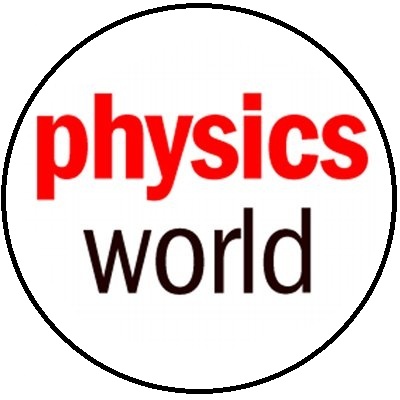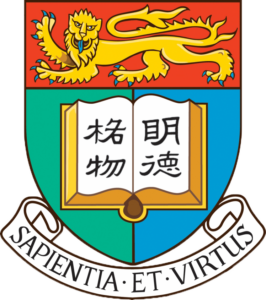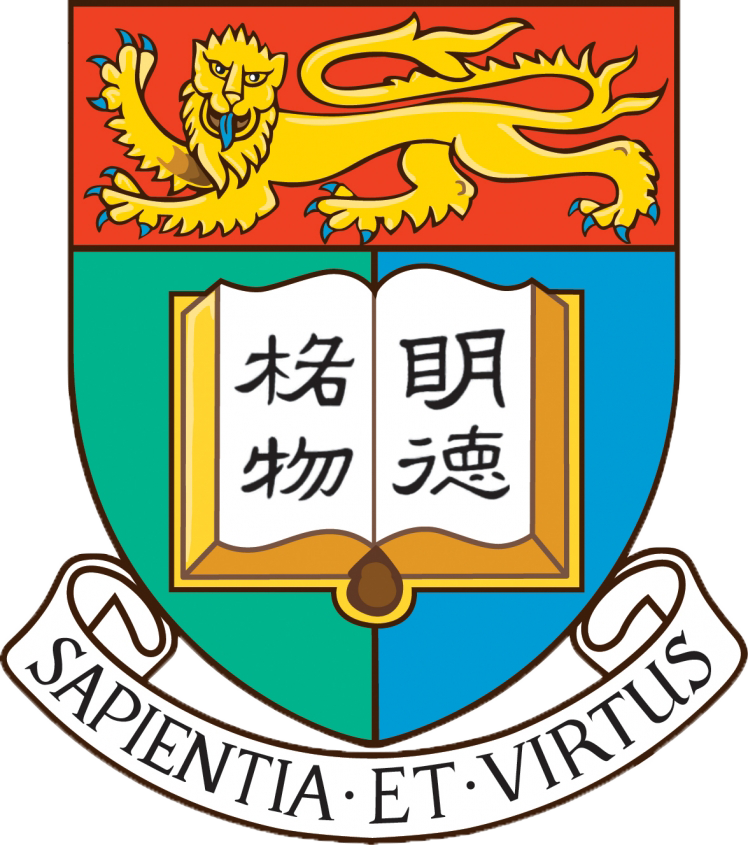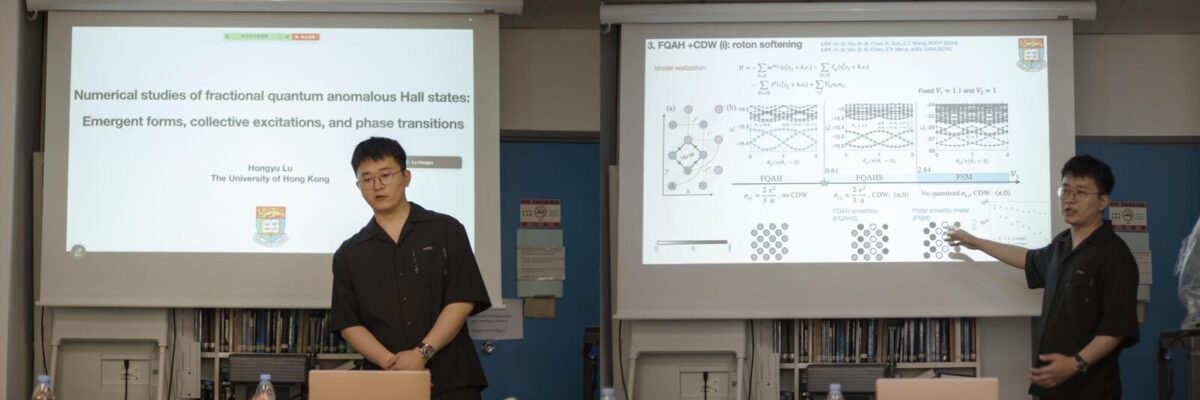A heartfelt congratulations to Dr. Xiaoxue Ran on the successful defense of her PhD thesis, titled "Quantum Monte Carlo Simulations of Constrained Models: Hidden Order and Novel Criticality," on September 18. She extends sincere gratitude to the examiners: Profs Chenjie Wang and Shizhong Zhang from HKU, and Prof. Zhengcheng Gu from CUHK, and the Chairperson Prof. OKURO Kou from Department of Chemistry, HKU. Thanks to all the friends and colleagues who came to offer support and encouragement. Congratulations, Xiaoxue! We look forward to seeing all the great things you will accomplish in the future! Continue reading
The different ways of ordering electrons in two dimensional materials
Researchers from the University of Hong Kong, including Drs. Hongyu Lu, Bin-bin Chen and Prof. Zi Yang Meng, teamed up with Profs. Kai Sun from the University of Michigan and Han-Qing Wu from Sun Yat-sen University, discovered different ways of ordering electrons in 2D quantum materials. In particular, the research team focused on the interplay between smectic order and topological order. The exotic states and thermal phase transitions exhibiting such features are expected to be accessed in future experiments. Continue reading
 |
 |
|---|
Launch of Official Website for the Meeting on Fractional Chern Insulators
We are pleased to announce the launch of the official website for the meeting "Fractional Chern Insulators: Theory, Numerics and Experiment."
Access the site here: [Fractional Chern Insulators: Theory, Numerics and Experiment].
Join us from September 4 to 7, 2025, at the University of Hong Kong for a comprehensive exploration of advancements in this field. For more details on registration and key topics, please visit the website. We look forward to your participation!
 |
|---|
Unraveling the Mystery of Deconfined Quantum Critical Points
A recent study, led by Professor Zi Yang MENG and co-authored by his PhD student Menghan SONG of HKU Department of Physics, in collaboration with researchers from the Chinese University of Hong Kong, Yale University, University of California, Santa Barbara, Ruhr-University Bochum and TU Dresden, has unravelled some of the secrets concealed within the deconfined quantum critical points. Their findings, recently published in the prestigious journal Science Advances, push the boundaries of modern physics and offer a fresh perspective on how quantum matter operates at these enigmatic junctures.
 |
 |
 |
 |
 |
|---|
Congratulations, Dr. Lu
On April 16, 2025, Mr. Hongyu Lu marked a pivotal achievement by successfully defending his Ph.D. thesis, entitled "Numerical studies of fractional quantum anomalous Hall states: Emergent forms, collective excitations, and phase transitions". His clear and compelling presentation of his research findings from his time at HKU, along with his confident responses to impromptu questions, earned high praise from the Examining Committee, which included Prof. Xi Dai from HKUST, and Profs. Wang Yao and Dong-Keun Ki from HKU. Congratulations to Dr. Hongyu Lu! We wish him continued success and look forward to his contributions as an emerging leader in theoretical condensed matter physics. Continue reading
从《马说》到《Super-moire 说》
Entanglement Microscopy: How Matter Entangles in Quantum Many-Body Systems
A collaboration between Mr. Ting-Tung Wang, Mr. Menghan Song, and Professor Zi Yang Meng from the Department of Physics at The University of Hong Kong (HKU) together with their collaborators Liuke Lyu and William WITCZAK-KREMPA from the University of Montreal has recently developed a novel algorithm in quantum physics known as ‘entanglement microscopy’ that enables visualization and mapping of this extraordinary phenomenon at a microscopic scale. Their study was published in a recent issue of Nature Communications. Using the algorithm, one can uncover the hidden structures of quantum matter, revealing insights that could transform technology and deepen the understanding of the universe. Continue reading
 |
 |
 |
 |
|---|
AI and quantum physics (and ancient Greece and mahjong)
In this interview with HKU science editor, Dr Pavel Toropov, Professor Meng explains why AI is now indispensable in quantum physics research – by allowing us to circumvent the need for enormous computational complexity, AI can help to make breakthroughs and in the process help us to understand better of mother nature and ourselves. This leads to discoveries of quantum materials whose properties, such as superconductivity and entanglement, can change the world. The technology may be cutting edge, but the principles involved, says Prof Meng, go back to ancient greek maxim - know thyself, and the whole thing is similar to playing mahjong. Click here for the interview.
 |
 |
|---|
Thoughts on the 2024 Nobel Prizes: Where will Artificial Intelligence take Science and Scientists?
In 2024, Artificial Intelligence (AI) achieved a remarkable milestone by winning the Nobel Prizes in both Physics and Chemistry. This unprecedented event sparked a significant debate about the role of AI in revolutionizing traditional methods and paradigms in scientific research. In light of these developments, FanPu (返朴) saw it as an opportune moment to initiate a deep discussion on this topic. They invited Prof. Meng to join a live forum with Prof. Pei Wang, the vice chair of the Artificial General Intelligence Society from Temple University, Prof. Yuqing Lou, a well-known astrophysicist from the Department of Physics at Tsinghua University, and Prof. Xu Li, a biochemistry and structural biologist from the University of Science and Technology of China, to share their thoughts on where AI will take science and scientists.
 |
 |
|---|
Congratulations to Professor Meng for winning the 2024 Top China Cited Paper Award (Physics)
Our team was one of the winners of the 2024 Top China Cited Paper Award (Physics) for "Momentum Space Quantum Monte Carlo on Twisted Bilayer Graphene", published in Chinese Physics Letters. This award for China-based authors is given to the top ten papers in the top 1% of the most cited articles published in IOP Publishing journals over the past three years (2021 – 2023). This data is from the citations recorded in Web of Science. This article (Chin. Phys. Lett. 38, 077305 (2021)) has developed a momentum space quantum Monte Carlo algorithm to deal with the long-range Coulomb interaction problem that emerges in two-dimensional quantum moire materials such as twisted graphene, which is one of the universal challenges in correlated electron systems. Three years ago, Zi Yang quoted the famous poetry of ancient Chinese poet Jiang Kui(姜夔) to explain how the “Coulomb force is endless, momentum Monte Carlo sends longing thoughts”(库伦作用无尽期,动量蒙卡寄相思) inspire them to pursue the research of long range interaction in quantum moire systems. The quantum many-body paradigm of the moire system is becoming a beautiful stream that carries them to the heartland of scientific creativity.
 |
|---|










